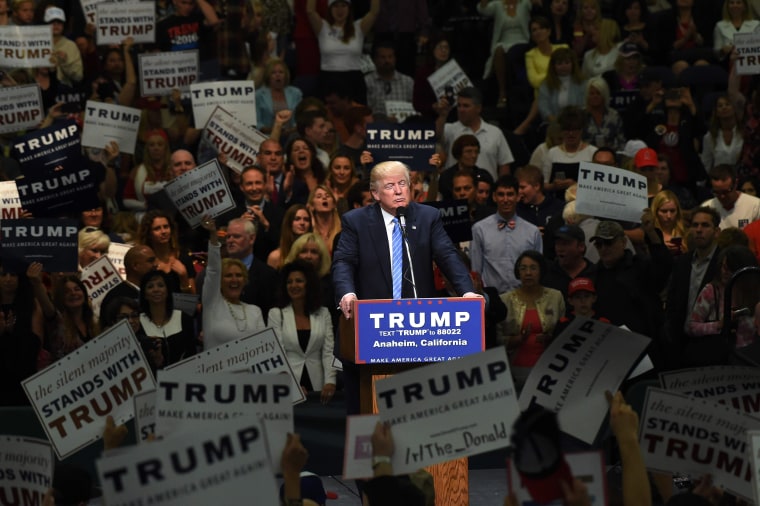Winning an election isn’t just about winning voters over; it is about turning your voters out. And a series of national and state polls this week suggests Donald Trump, and the political party he represents, could be looking at a tough November if they can’t change how Republicans feel about their nominee.
An ABC News/Washington Post poll released this week showed a third of Republicans viewed their party’s presidential nominee unfavorably, 34%. The other two-thirds, 65%, of Republicans saw Trump favorably.
How bad it that? For perspective, consider Hillary Clinton’s “favorable” number among Democrats. Her struggles with how voters view her are well known, but at 75% favorable/25% unfavorable among Democrats she is still far ahead of Trump.
And remember Clinton’s rival Sen. Bernie Sanders has not even conceded the nomination yet. Her favorable number may change if and when Sanders relents and the Democrats sew their party back together this summer.
Other polls suggest how damaging Trump’s unfavorable numbers could be to the GOP at the ballot box.
A Bloomberg Politics poll this week found that 28% of Republicans say they feel unfavorably about their party. Among Democrats in the same poll, that figure was much lower, only 4%. That’s a yawning 24-point gap.
In Wisconsin, a Marquette University Law School poll this week showed only about half of Republicans, 52%, held a favorable view of Trump. That same poll revealed some of the consequences of those numbers.
The survey reported 78% of Republicans were certain they would vote in November. A poll from the same organization in March found that 87% of Republicans were certain they would vote in November. That’s a nine-point drop.
The key difference between March and June is that Trump was not yet the nominee in March. Wisconsin voted heavily for Texas Sen. Ted Cruz in the state’s April Republican primary.
And the Wisconsin poll also showed how much difference those numbers could make to the bottom line in the important battleground. Clinton led Trump by seven points among “registered voters” in the state, 42% to 35%. But when measure switched to “likely voters” Clinton’s lead jumped to nine points, 46% to 37%.
In Wisconsin’s senate race, the difference between registered and likely voters was even sharper. Democrat, and former Sen., Russ Feingold leads Sen. Ron Johnson by four points among registered voters, but by nine points among likely voters.
The numbers show what may be the deepest concern Republicans have with Trump as their presidential nominee: Will enough of the party faithful show up at the polls on Election Day, not just for Trump but for other down-ballot candidates in important races?
Neither of 2016’s major party presumptive nominees are popular politicians, but right now, Trump’s problems in that area look especially problematic for Republicans.
When candidates struggle to win over voters, campaigns can become base-driven – with both parties trying just to appeal to their loyal partisans. But when candidates struggle to turnout their base? That’s when elections can into waves, or tsunamis.
Trump and GOP have work to do.
